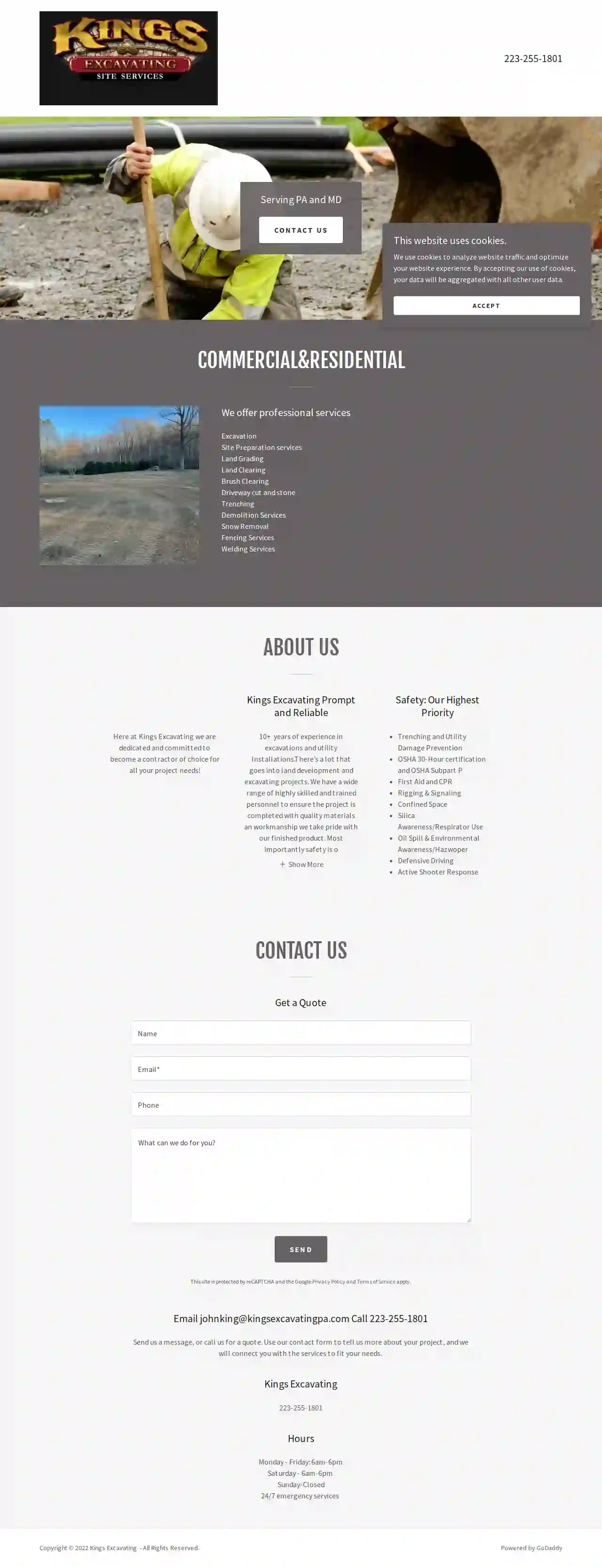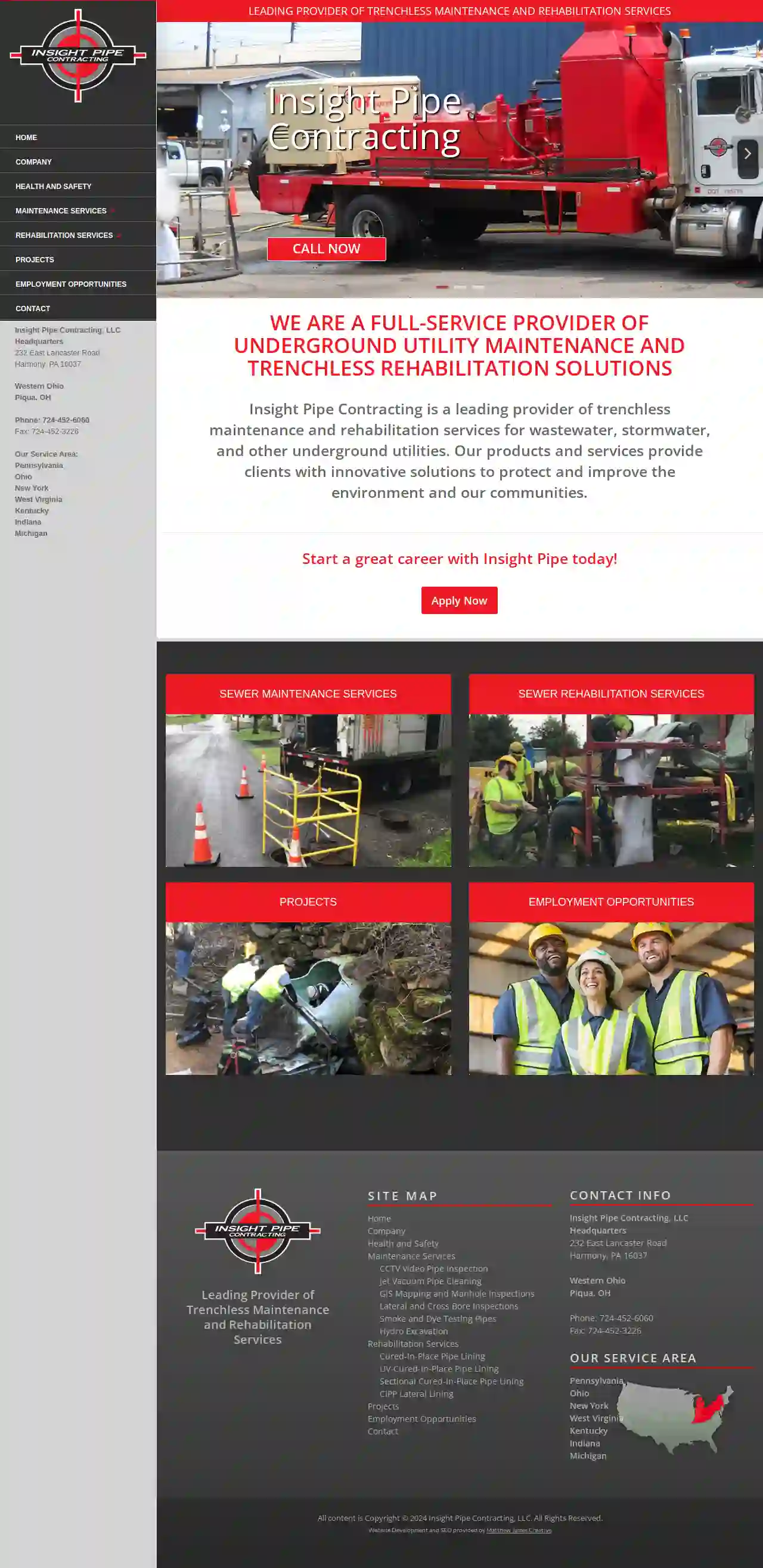Excavation Contractors East Marlborough
Top Excavation Services in East Marlborough
Receive 3 FREE Excavating Contractors quotes for your project today! Compare profiles, reviews, accreditations, portfolio, etc... and choose the best offer.

Staten Island Masonry- Staten Island Masonry Contractors
518 reviewsYork, USStaten Island Masonry Serving Staten Island and surrounding areas Staten Island Masonry and Concrete is the premier choice for masonry and concrete services in Staten Island. Our team of experienced masonry contractors specialize in a variety of services, including brick laying, block laying, and concrete work. We have been providing superior quality masonry and concrete services to Staten Island and the surrounding areas for over 20 years. We are committed to providing outstanding customer service and craftsmanship on every project. Our team is dedicated to providing the highest quality standard of work and strive to exceed our customers’ expectations. We take the time to understand your project and provide a tailored solution that meets your needs.
- Services
- Why Us?
- Testimonials
- Gallery
Get Quote
Mundis Excavating
53 reviews80 Manor Road, 80 MANOR ROAD, Red Lion, 17356, USAbout Us Red Lion local, Bob (Bobby) Mundis is the owner-operator of Mundis Excavating. Bob is the third generation excavator. He has 20+ years of experience in heavy equipment operation. Bob started his career as an operator for his father, Jay E. Mundis Excavating. He then moved on to become a project coordinator and later an estimator for a commercial contractor in Baltimore, MD. Bob oversaw projects in such institutions as NASA, Johns Hopkins University, and Johns Hopkins Hospital. In 2018, Bob decided to open his own excavating company in his home town of Red Lion. Maria Mundis Wife of Bob Mundis, Maria is the Controller of Mundis Excavating. Before graduating from Penn State University with Bachelor's of Science in Electro-Mechanical Engineering, Maria gained some work experience in banking industry. After completing an internship at Johnson Controls, Inc., Maria chose to become a stay-at-home mom to her and Bob's two children, later to begin helping Bob with his business. Family Owned Small Business Mundis Excavating was established in 2018 as a dream of one family to use our talents for honest service to others. Our company motto is: "A just scale and a fair measure." Our continuous goal is to work tirelessly in order to provide our customers with the best service and quality of work at affordable prices. We hope to continue growing our company in the years to come. Our Promise We are committed to providing honest and prompt service. The integrity of our business is our priority.
- Services
- Why Us?
- Our Team
- Gallery
Get Quote
USA Asphalt Paving Contractors
4.559 reviews3 N Line Rd, Newtown Square, 19073, USUSA Asphalt Paving Contractors: Your Trusted Paving Partner in Chester and Delaware Counties PA We understand that your driveway, parking lot, or sidewalk can be a source of frustration when they're cracked, faded, or uneven. That's why we're here to provide you with the solutions you need. We're a team of experienced paving contractors in Delaware County and Chester Counties PA, dedicated to delivering high-quality workmanship, competitive pricing, and exceptional customer satisfaction. With over 20 years of experience serving Delaware County, Chester County, Montgomery County, and beyond, we've earned a reputation for excellence. Our commitment to quality and professionalism has been recognized by leading consumer organizations. We're not just a paving contractor; we're your paving partner. We're here to help you with any paving, asphalt, or concrete services you need, making your life easier, your property safer, and your curb appeal higher. Don't settle for less. Why Choose USA Asphalt Paving Contractors? You have options, but not all paving contractors are created equal. Inexperienced contractors, unlicensed professionals, and uninsured companies can cost you time, money, and property. We understand the importance of choosing a reliable and trustworthy partner for your paving needs. At USA Asphalt Paving Contractors, we're experienced, licensed, and insured, with years of industry know-how. We're quality-oriented and competitively priced, ensuring you get the best value for your investment. We're detail-oriented experts who prioritize safety while delivering beautiful results. Don't risk your hard-earned cash on just anyone; trust the best when it comes to asphalt paving. Our Services We're your one-stop shop for all your asphalt, pavement, and concrete needs. We have the expertise and equipment to handle any size project, from small driveways to major roadways. Our comprehensive services include: Asphalt paving for driveways, parking lots, private roads, and more. We'll install, repair, or replace any asphalt surface you have, creating smooth, durable, and attractive surfaces that will last for years. Masonry and brickwork for walls, fireplaces, chimneys, and more. We can build, repair, or restore any masonry or brickwork, adding value and charm to your property. Concrete services for sidewalks, curbs, patios, and more. We'll install, repair, or replace any concrete surface, creating strong, stable, and versatile surfaces for any purpose. We can customize our services to fit your specific needs and preferences. We can also integrate certain services to create a comprehensive package for your project. We'll provide you with our honest assessment and recommendations to ensure you get the best possible results. Choose USA Asphalt Paving Contractors for guaranteed results at a price you can agree with!
- Services
- Why Us?
- Gallery
Get Quote
Winola Excavating
57 reviews64 Benson Hollow Ln, Tunkhannock, 18657, USWinola Excavating – Delivering quality service and expert craftsmanship for all your construction and excavation needs. We are a full-service local contractor specializing in residential, commercial and industrial excavation and construction services. Our clients include homeowners, business owners, landlords, real estate agents, builders, contractors and developers. What sets us apart? Typically, we are able to provide same day estimates and will show up on time prepared to deliver exceptional service to you. In fact, we have limited to no rescheduling (dependant on weather), price our jobs fairly and get them done in a timely fashion. Your satisfaction is our number one goal. And with 10 years of customer service management experience, we know how to deliver.
- Services
- Why Us?
- Gallery
Get Quote
Smith Excavating LLC
521 reviewsHarrisburg, 62946, USExcavation Services When the people in our community need the expertise and professional oversight of an excavation contractor, they know to contact Smith Excavating LLC. Whether you need someone to clear the land on a worksite, dig out a pond, or excavate for a home foundation, we can help you. Homeowners and skilled builders alike look to us for all their excavating needs—and the reasons why are obvious. Whether you’re most concerned with quick turnarounds, reasonable rates, or excellent results, you will surely love our approach to excavation. Book our services today for your upcoming project. Call (618) 499-2594 to schedule your consultation. Making Excavation Look Easy We are high-demand excavation contractors. Not a day goes by where we are not doing earthwork, digging trenches, or aiding the development of a new property. Over the years, we have come to understand the finer points of excavation better than the rest. We Serve the Customer We work in accordance with the standards of our trade, make no mistake. That said, we also believe in serving the customer every step of the way. We will listen to your requests, answer your questions, and address any concerns you might have. In the end, you get quality results and a customer experience like no other. Ready for Every Excavation Project Do you want to dig out a pond in the backyard of your home? Are you looking to clear a piece of property of large rocks and other masses? We can help you. Between our unparalleled expertise and vast storehouse of equipment, we can undertake just about any excavation project. Some of the services we offer include: Basement excavation Pond digging and filling Site clearing Trenches and troughs Foundation digging Grading And more Aiding Residential and Commercial Excavation Projects Since our company’s inception, we have had the opportunity to assist in projects of all varieties, from home building to commercial landscaping and everything in between. We tackle projects of all sizes—and what’s more, we treat every project with the seriousness it deserves. Would you like to learn a little more about us? Call our offices today.
- Services
- Why Us?
- Testimonials
- Gallery
Get Quote
Kings Excavating
Pittsburgh, USKings Excavating: Prompt and Reliable Here at Kings Excavating, we are dedicated and committed to becoming your contractor of choice for all your project needs! With over 10 years of experience in excavations and utility installations, we have a wide range of highly skilled and trained personnel to ensure your project is completed with quality materials and workmanship. We take pride in our finished product, and most importantly, safety is our number one priority. We strive to create a safe working environment for our employees and the public throughout every project. Safety: Our Highest Priority We prioritize safety in all our operations, adhering to the highest industry standards. Our team is equipped with the necessary certifications and training to ensure a safe and efficient work environment. Our commitment to safety includes: Trenching and Utility Damage Prevention OSHA 30-Hour certification and OSHA Subpart P First Aid and CPR Rigging & Signaling Confined Space Silica Awareness/Respirator Use Oil Spill & Environmental Awareness/Hazwoper Defensive Driving Active Shooter Response
- Services
- Why Us?
- Gallery
Get Quote
Kuharchik Construction
4.428 reviews420 Schooley Ave, Exeter, 18643, USWE ARE KUHARCHIK CONSTRUCTION. Providing superior electrical contracting services throughout Pennsylvania since 1973. We’re local, we’re family owned, we’re union! Kuharchik is your first choice in Electrical Contracting. From Highway Signing & Lighting to Foundation Installation, we take pride in every job that we do.
- Services
- Why Us?
- Gallery
Get Quote
Insight Pipe Contracting, LLC
3.912 reviews232 East Lancaster Road, Harmony, 16037, USInsight Pipe Contracting, LLC Insight Pipe Contracting is a leading provider of trenchless maintenance and rehabilitation services for wastewater, stormwater, and other underground utilities. Our products and services provide clients with innovative solutions to protect and improve the environment and our communities.
- Services
- Why Us?
- Gallery
Get Quote
Liberty Excavators Inc
3.123 reviewsHarrisburg, USWho is Liberty Excavators? Headquartered near Harrisburg, PA, Liberty Excavators is recognized as one of the Mid-Atlantic’s most respected and reliable turnkey site contractors, based on a solid track record spanning over 40 years. Our experienced workforce and state-of-the-art equipment fleet provide us with both the experience and resources to professionally deliver a quality-finished product in the time frame our customers require. Specializations Liberty Excavators specializes in a wide range of projects, including: Turnkey Site Development Warehousing Shopping Centers Industrial Commercial / Residential Site Development Military and Federal Government Healthcare Higher Education Housing Developments Energy (Oil and Gas) Crushing Heavy Equipment Hauling Water / Waste Water Treatment Plants Sewer / Water Utility Line Installation
- Services
- Why Us?
- Gallery
Get Quote
Kirby Kitner Excavating & Paving
4.86 reviews7214 Spring Road, New Bloomfield, USWelcome to Kirby Kitner Excavating! Whether it is site prep for new structures, foundations, road building, graves sites, drainage or septic systems, Kirby consults with all customers personally and is present on all job sites to assure you of quality workmanship. Our staff is professional, experienced, and dependable. We are celebrating our 39th year in business. Kirby Kitner Excavating is a local, family-owned business. Our company is fully insured and we give free estimates. Kirby Kitner Excavating is a DOT Registered Motor Carrier: USDOT 2291670 and a Registered PA Contractor: # PA027056. We are members of the Perry County Chamber of Commerce. Kirby Kitner Excavating is located at 7214 Spring Road, New Bloomfield, PA.
- Services
- Why Us?
- Gallery
Get Quote
Over 22,076+ Excavation Companies in our network
Our excavation providers operate in East Marlborough and beyond!
ExcavationHQ has curated and vetted Top Excavation Contractors near East Marlborough. Find the most trustworthy contractor today.
Frequently Asked Questions About Excavation Contractors
- Project Size and Scope: The larger and more complex the excavation, the higher the cost.
- Soil Type: Different soil types require different equipment and techniques, impacting costs. Rocky or clay-rich soil can be more expensive to excavate than loose soil.
- Accessibility: Difficult-to-access sites might require specialized equipment or additional labor, increasing expenses.
- Disposal Costs: Hauling away excavated material (soil, rocks, etc.) to disposal sites incurs additional fees.
- Permits and Inspections: Depending on local regulations, permits and inspections might be required, adding to the overall cost.
- Project Size and Scope: Larger, more complex excavations naturally take longer.
- Soil Conditions: Rocky or challenging soil types can slow down progress.
- Site Accessibility: Limited access might require more time for maneuvering equipment and hauling materials.
- Weather: Inclement weather can cause delays.
- Permitting and Inspections: Waiting for permits or inspections can extend the timeline.
What is the difference between cut and fill excavation?
Cut: Involves excavating soil from an area where the existing grade is higher than the desired grade.
Fill: Refers to using the excavated soil ('cut' material) to raise the grade in an area where the existing grade is lower than desired.
This method minimizes the need to import or export soil, reducing costs and environmental impact. It's commonly used for site preparation, road construction, and landscaping.
How much does excavation cost?
How long does an excavation project take?
What is the difference between topsoil and subsoil?
Topsoil: The uppermost layer, typically rich in organic matter, nutrients, and microorganisms. It's essential for plant growth and is often darker in color.
Subsoil: The layer beneath the topsoil, containing less organic matter and generally denser. It provides support for roots but is less fertile than topsoil.
During excavation, topsoil is often removed and preserved separately for later use in landscaping, while subsoil is typically used for backfilling or other less demanding applications.
What is the difference between cut and fill excavation?
Cut: Involves excavating soil from an area where the existing grade is higher than the desired grade.
Fill: Refers to using the excavated soil ('cut' material) to raise the grade in an area where the existing grade is lower than desired.
This method minimizes the need to import or export soil, reducing costs and environmental impact. It's commonly used for site preparation, road construction, and landscaping.
How much does excavation cost?
- Project Size and Scope: The larger and more complex the excavation, the higher the cost.
- Soil Type: Different soil types require different equipment and techniques, impacting costs. Rocky or clay-rich soil can be more expensive to excavate than loose soil.
- Accessibility: Difficult-to-access sites might require specialized equipment or additional labor, increasing expenses.
- Disposal Costs: Hauling away excavated material (soil, rocks, etc.) to disposal sites incurs additional fees.
- Permits and Inspections: Depending on local regulations, permits and inspections might be required, adding to the overall cost.
How long does an excavation project take?
- Project Size and Scope: Larger, more complex excavations naturally take longer.
- Soil Conditions: Rocky or challenging soil types can slow down progress.
- Site Accessibility: Limited access might require more time for maneuvering equipment and hauling materials.
- Weather: Inclement weather can cause delays.
- Permitting and Inspections: Waiting for permits or inspections can extend the timeline.
What is the difference between topsoil and subsoil?
Topsoil: The uppermost layer, typically rich in organic matter, nutrients, and microorganisms. It's essential for plant growth and is often darker in color.
Subsoil: The layer beneath the topsoil, containing less organic matter and generally denser. It provides support for roots but is less fertile than topsoil.
During excavation, topsoil is often removed and preserved separately for later use in landscaping, while subsoil is typically used for backfilling or other less demanding applications.